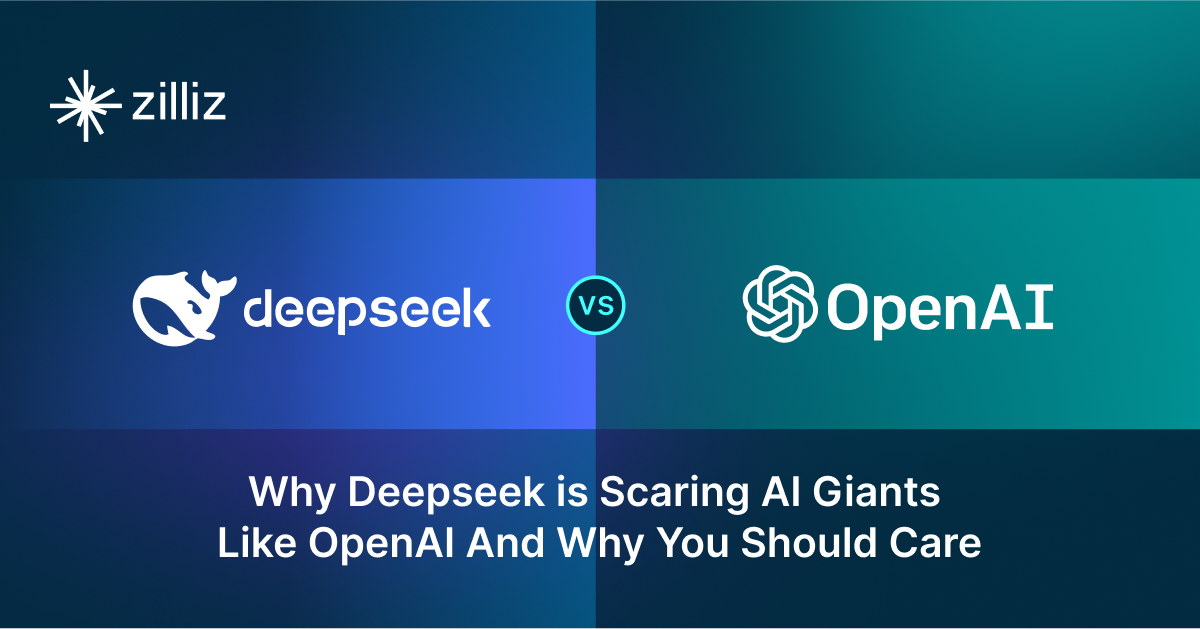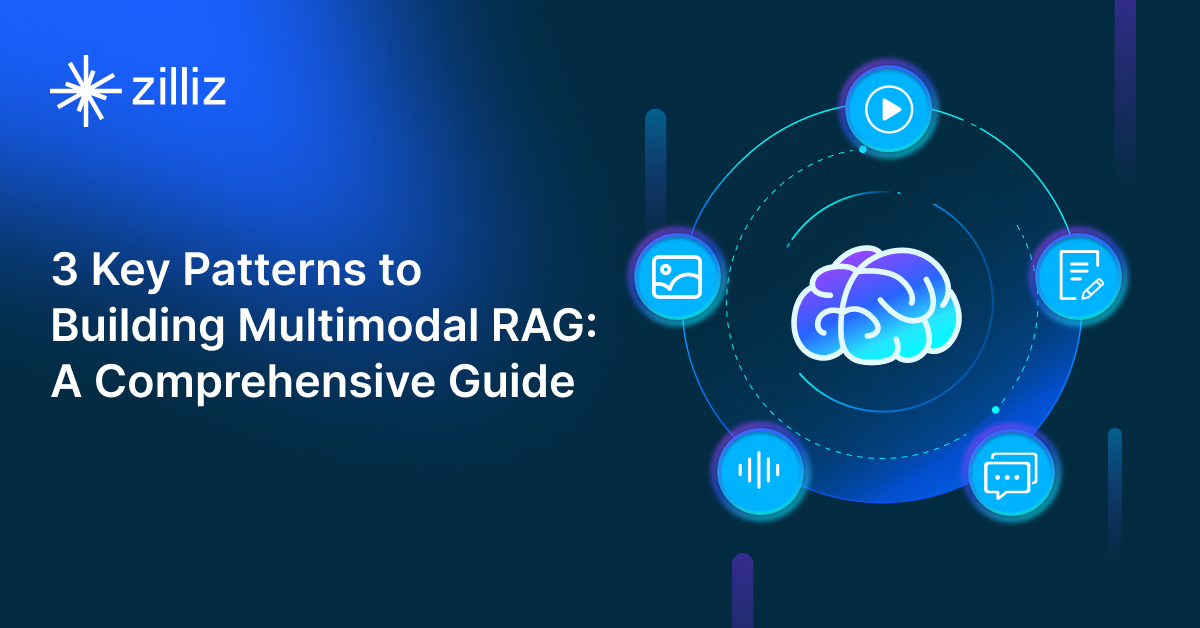SingleStore vs KDB Choosing the Right Vector Database for Your AI Apps

SingleStore vs KDB Choosing the Right Vector Database for Your AI Apps
What is a Vector Database?
Before we compare SingleStore and KDB, let's first explore the concept of vector databases.
A vector database is specifically designed to store and query high-dimensional vectors, which are numerical representations of unstructured data. These vectors encode complex information, such as the semantic meaning of text, the visual features of images, or product attributes. By enabling efficient similarity searches, vector databases play a pivotal role in AI applications, allowing for more advanced data analysis and retrieval.
Common use cases for vector databases include e-commerce product recommendations, content discovery platforms, anomaly detection in cybersecurity, medical image analysis, and natural language processing (NLP) tasks. They also play a crucial role in Retrieval Augmented Generation (RAG), a technique that enhances the performance of large language models (LLMs) by providing external knowledge to reduce issues like AI hallucinations.
There are many types of vector databases available in the market, including:
- Purpose-built vector databases such as Milvus, Zilliz Cloud (fully managed Milvus)
- Vector search libraries such as Faiss and Annoy.
- Lightweight vector databases such as Chroma and Milvus Lite.
- Traditional databases with vector search add-ons capable of performing small-scale vector searches.
SingleStore is a distributed, relational, SQL database management system and KDB is a purpose-built time series database. Both with vector search as an add-on. This post compares their vector search capabilities.
SingleStore: Overview and Core Technology
SingleStore has made vector search possible by putting it in the database itself, so you don’t need separate vector databases in your tech stack. Vectors can be stored in regular database tables and searched with standard SQL queries. For example, you can search similar product images while filtering by price range or explore document embeddings while limiting results to specific departments. The system supports both semantic search using FLAT, IVF_FLAT, IVF_PQ, IVF_PQFS, HNSW_FLAT, and HNSW_PQ for vector index and dot product and Euclidean distance for similarity matching. This is super useful for applications like recommendation systems, image recognition and AI chatbots where similarity matching is fast.
At its core SingleStore is built for performance and scale. The database distributes the data across multiple nodes so you can handle large scale vector data operations. As your data grows you can just add more nodes and you’re good to go. The query processor can combine vector search with SQL operations so you don’t need to make multiple separate queries. Unlike vector only databases SingleStore gives you these capabilities as part of a full database so you can build AI features without managing multiple systems or dealing with complex data transfers.
For vector indexing SingleStore has two options. The first is exact k-nearest neighbors (kNN) search which finds the exact set of k nearest neighbors for a query vector. But for very large datasets or high concurrency SingleStore also supports Approximate Nearest Neighbor (ANN) search using vector indexing. ANN search can find k near neighbors much faster than exact kNN search sometimes by orders of magnitude. There’s a trade off between speed and accuracy - ANN is faster but may not return the exact set of k nearest neighbors. For applications with billions of vectors that need interactive response times and don’t need absolute precision ANN search is the way to go.
The technical implementation of vector indices in SingleStore has specific requirements. These indices can only be created on columnstore tables and must be created on a single column that stores the vector data. The system currently supports Vector Type(dimensions[, F32]) format, F32 is the only supported element type. This structured approach makes SingleStore great for applications like semantic search using vectors from large language models, retrieval-augmented generation (RAG) for focused text generation and image matching based on vector embeddings. By combining these with traditional database features SingleStore allows developers to build complex AI applications using SQL syntax while maintaining performance and scale.
Kdb: Overview and Core Technology
KDB is a high-performance database that excels in real-time data processing without the need for GPUs. It’s capable of handling raw data, generating vector embeddings, storing them, and running similarity searches, all in real time. One of KDB’s key strengths is its multi-modal performance, supporting a variety of data types and use cases. Its approach integrates streaming, embedding generation, vector database, raw data handling, time-series, and analytics into a single, unified solution, greatly simplifying the technology stack for developers and making it adaptable across applications.
KDB incorporates dynamic indexing, which allows developers to dynamically select vector embeddings for similarity search without rigid index restrictions. This leads to faster and more flexible search capabilities. KDB supports re-encoding across datasets, enabling cross-dataset similarity searches by re-encoding and storing raw data with different dimensions. For time-series data, KDB provides unique similarity search capabilities even without embedding generation, offering more versatility to users dealing with both fast- and slow-changing datasets.
When it comes to performance, KDB stands out by outperforming popular methods like HNSW. It performs searches 17 times faster and uses 12 times less memory compared to HNSW, particularly for fast-changing temporal data. For slow-changing, time-based datasets, KDB reduces memory and disk storage by 100x while accelerating searches by 10x. The ability to combine similarity, exact, and literal searches in a single query ensures query relevance even as content evolves, making KDB an efficient solution for real-time and evolving data.
KDB.AI enhances its vector search capabilities by allowing developers to combine vector similarity searches with traditional database queries. This is achieved through the use of filters, which apply custom constraints based on the search parameters. KDB supports multiple search methods, including Flat and qFlat (both exhaustive searches for exact nearest neighbors), HNSW (a graph-based index for efficient traversal), IVF (cluster-based searches for faster, but less precise results), and IVFPQ (a compressed version of IVF for improved memory efficiency and speed). Each method offers unique trade-offs, allowing developers to choose the best approach for their specific use case.
Key Differences
Search Methods
SingleStore: SingleStore has both exact k-nearest neighbors (kNN) and Approximate Nearest Neighbor (ANN) search methods. ANN uses IVF and HNSW indexing for faster search at the cost of some loss of accuracy, good for large scale high concurrency applications. It integrates vector search directly with SQL queries so you can mix similarity search with traditional filters (e.g. by price or category).
KDB: KDB has multiple search methods: Flat, qFlat, HNSW, IVF, IVFPQ with dynamic indexing. It’s flexible for cross-dataset search and real-time query adaptability. KDB’s indexing methods are optimized for speed and memory usage, outperforms popular graph-based methods like HNSW in both time and resources.
Data
SingleStore: Structured and semi-structured data, columnstore tables for vector indices. Good for combining vector search with traditional SQL workflows, but assumes a structured schema. Use cases: image recognition, recommendation systems, retrieval-augmented generation (RAG) tasks.
KDB: Multimodal data, streaming, embedding generation, raw data handling in one environment. Good for time-series and real-time data, you can search without embedding generation.
Scalability
SingleStore: Distributed architecture scales linearly as data grows. Combines vector and SQL queries in one operation so reduces the overhead of managing multiple systems.
KDB: KDB is optimized for real-time and fast-changing datasets. Reduces memory usage by 100x and search time by 10x for time-series data. Good for scenarios with both temporal and static data.
Flexibility
KDB: Dynamic indexing and re-encoding across datasets, cross-dataset similarity search. Developers can tune indexing and query parameters based on their needs.
Integration and Ecosystem
SingleStore: Integrates with SQL-based tools, good for developers familiar with traditional databases. Embeds vector search into existing database operations.
KDB: Unified architecture for streaming, time-series, vector data. Good for various applications. Ecosystem for data-intensive use cases: finance, IoT, machine learning.
Usability
SingleStore: SQL-first approach lowers the barrier for database users. Documentation is for developers familiar with relational databases.
KDB: Powerful but requires familiarity with q language. Developers may have a steeper learning curve when integrating KDB into existing workflows.
Cost
KDB: KDB's memory and storage optimizations can save you a lot of money, especially for real-time analytics and vector search heavy applications.
Security
SingleStore: Enterprise-grade security: encryption, authentication, role-based access control (RBAC). Good for sensitive workloads.
KDB: Same for security, but with additional features for finance and IoT where compliance and real-time protection is critical.
When to choose SingleStore
SingleStore is for applications that need to combine vector search with structured or semi-structured data in a SQL world. Its distributed architecture can handle big workloads with ease so it’s great for use cases like recommendation systems, AI powered search engines and retrieval-augmented generation (RAG) pipelines. It can do both exact and approximate nearest neighbor search so you can balance performance and precision based on your needs. It’s a good choice for businesses scaling vector search alongside traditional database operations.
When to choose KDB
KDB is for scenarios that require real-time data processing like time-series or fast changing data. Its multi-modal capabilities make it great for industries like finance, IoT or energy where streaming data and fast analytics are key. Developers that need high performance similarity search with dynamic indexing and advanced query flexibility will love KDB’s one stop shop. Plus KDB is super efficient in memory and storage so it’s very cost effective for demanding data heavy applications.
Summary
SingleStore and KDB are good for different use cases. SingleStore is great for environments where you need to combine vector search with traditional database features, scalability and ease of use. KDB is good for real-time and dynamic workloads, performance, flexibility and handling multiple data types. Choose between them based on your needs, what kind of data you have, what performance you need and how complex your use cases are.
Read this to get an overview of SingleStore and KDB but to evaluate these you need to evaluate based on your use case. One tool that can help with that is VectorDBBench, an open-source benchmarking tool for vector database comparison. In the end, thorough benchmarking with your own datasets and query patterns will be key to making a decision between these two powerful but different approaches to vector search in distributed database systems.
Using Open-source VectorDBBench to Evaluate and Compare Vector Databases on Your Own
VectorDBBench is an open-source benchmarking tool for users who need high-performance data storage and retrieval systems, especially vector databases. This tool allows users to test and compare different vector database systems like Milvus and Zilliz Cloud (the managed Milvus) using their own datasets and find the one that fits their use cases. With VectorDBBench, users can make decisions based on actual vector database performance rather than marketing claims or hearsay.
VectorDBBench is written in Python and licensed under the MIT open-source license, meaning anyone can freely use, modify, and distribute it. The tool is actively maintained by a community of developers committed to improving its features and performance.
Download VectorDBBench from its GitHub repository to reproduce our benchmark results or obtain performance results on your own datasets.
Take a quick look at the performance of mainstream vector databases on the VectorDBBench Leaderboard.
Read the following blogs to learn more about vector database evaluation.
Further Resources about VectorDB, GenAI, and ML
- What is a Vector Database?
- SingleStore: Overview and Core Technology
- Kdb: Overview and Core Technology
- Key Differences
- Using Open-source VectorDBBench to Evaluate and Compare Vector Databases on Your Own
- Further Resources about VectorDB, GenAI, and ML
Content
Start Free, Scale Easily
Try the fully-managed vector database built for your GenAI applications.
Try Zilliz Cloud for FreeKeep Reading

Why Deepseek is Waking up AI Giants Like OpenAI And Why You Should Care
Discover how DeepSeek R1's open-source AI model with superior reasoning capabilities and lower costs is disrupting the AI landscape and challenging tech giants like OpenAI.

Why DeepSeek V3 is Taking the AI World by Storm: A Developer’s Perspective
Explore how DeepSeek V3 achieves GPT-4 level performance at fraction of the cost. Learn about MLA, MoE, and MTP innovations driving this open-source breakthrough.

3 Key Patterns to Building Multimodal RAG: A Comprehensive Guide
These multimodal RAG patterns include grounding all modalities into a primary modality, embedding them into a unified vector space, or employing hybrid retrieval with raw data access.
The Definitive Guide to Choosing a Vector Database
Overwhelmed by all the options? Learn key features to look for & how to evaluate with your own data. Choose with confidence.